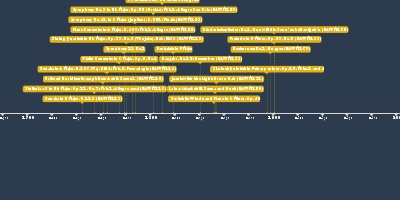jan 1, 1895 - Clarinet Quintet in F-sharp minor, Op. 10, Mvts. 1 and 4
Description:
Composer: Samuel Coleridge-TaylorGenre: Clarinet Quintet
The first clarinet quintet was written in 1789 by Wolfgang Amedeus Mozart, but the instrumentation was not widely popular until Brahms' quintet of 1891. However, Dvorak was accredited as Coleridge-Taylor's main inspiration for the quintet.
Instrumentation: a traditional string quartet plus a clarinet
Mvt 1 (Allegro Energico)
Has two notable themes with contrasting characters. This is something that Romantic composers like Coleridge-Taylor did to embody the inner turmoil in the duality of light and darkness within a person. The first theme is much darker, almost sounding like an exploration of the soul, where the second theme sounds significantly more loving, singing, and tender, to represent that light within the soul.
Mvt. 4 (Allegro agitato - Poco piu moderato - Vivace)
This movement has lots of conversations between different instruments and instrument families, and lots of playing with and returning to the main theme.
Allegro agitato: indicates both tempo and mood. Allegro means ‘moderately fast’, while agitato signals an ‘agitated’ or ‘restless’ character. Many aspects work together to create this mood, such as the movement’s key of F# minor, accented themes with rhythmic energy, or harmonic exploration.
Poco piu moderato: means ‘a little more restrained’, indicating both tempo and mood. The feelings of agitation subside, making way for singing melodies in a slower tempo.
The movement ends with an exciting Vivace. This marking indicates tempo and character, calling for music that is ‘full of life’, ‘flourishing’, and ‘thriving’. This mood presents itself in the energetic closing material full of syncopation, accents, and buoyancy, as well as the key of F# major.
Added to timeline:
Date:
jan 1, 1895
Now
~ 130 years ago
